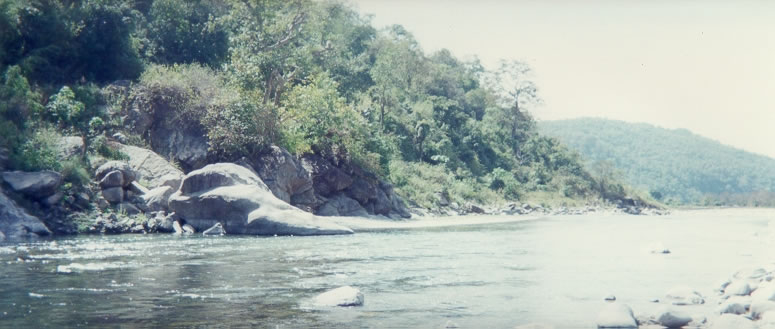| The most famous Moghul monument was constructed by Emperor Shah Jahan in memory of his wife Mumtaz Mahal, the 'Lady of the Taj'. It has been described as the most extravagant monument ever built to love, for the Emperor was heartbroken when Mumtaz, to whom he was married for 17 years, after producing 14 children. Construction of the Taj began in 1631 and was not completed until 1653. | 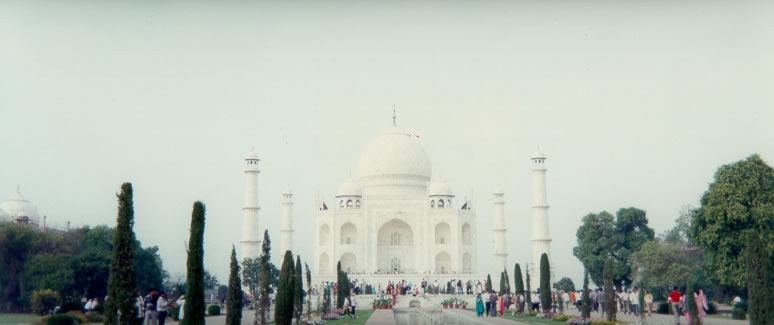 Taj Mahal |
The most unusual (but almost
certainly apochryphal) story about the Taj is that there might well have
been two of them. Shah Jahan, it is said, intended to build a second Taj
as his own tomb in black marble, a negative image of the white Taj of
Mumtaz Mahal. |
|
The Taj Mahal... |
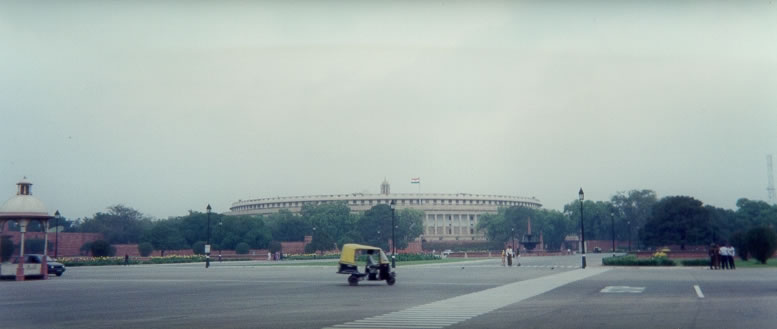 New Delhi |
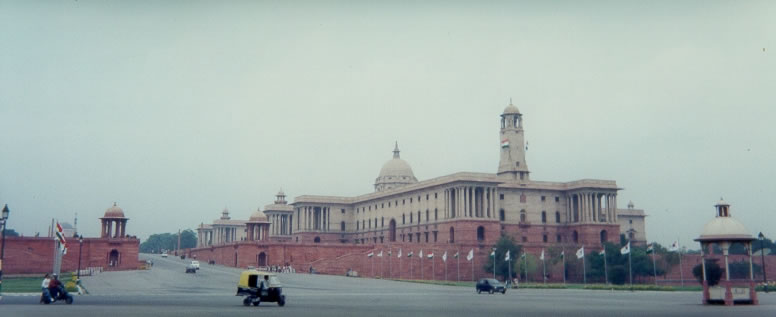 Government Buildings, New Delhi |
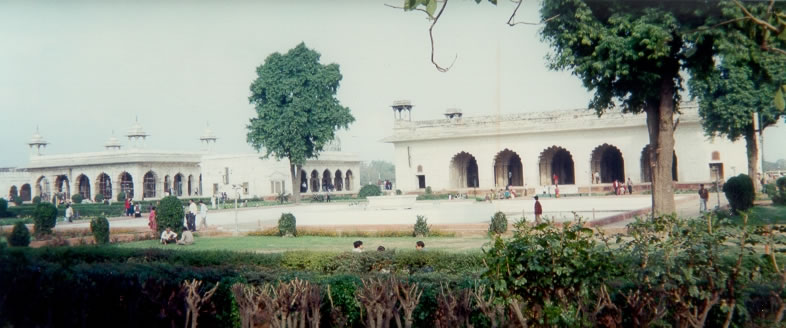 Shah Jahan's Red Fort, Old Delhi |
| The adventure begins..... | ... and the adventure ends. | Shah Jahan started construction
of the massive fort in 1638 and it was completed in 1648. "If there is paradise on earth it is this, it is this, it is this." |
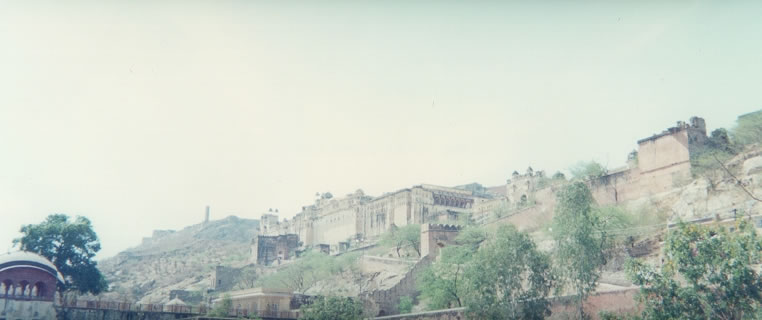 Amber Fort, near Jaipur |
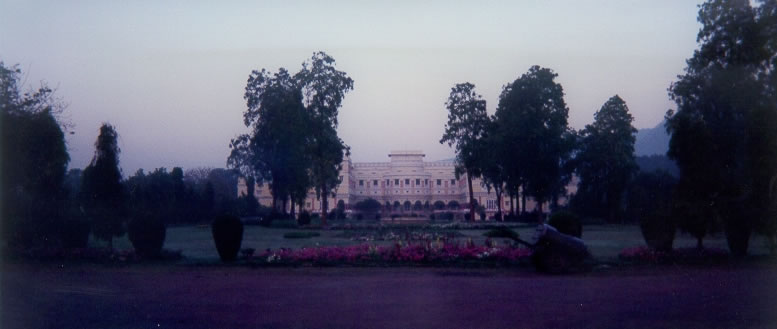 Palace of the Maharajah of Alwar near Ranthambor, Rajasthan |
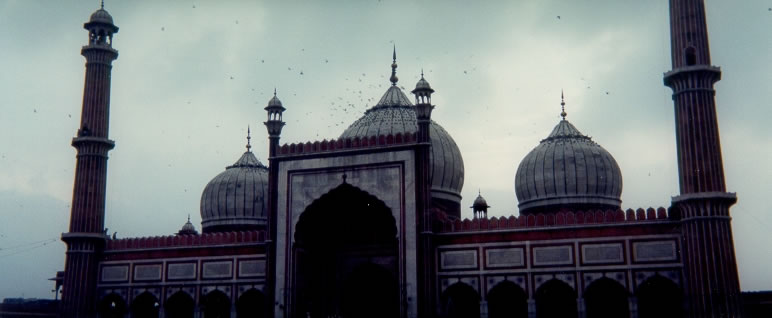 Jami Mashjid |
| About 11 km out of Jaipur, on the delhi to Jaipur road, Amber was once the ancient capital of Jaipur state. | Near the town of Sawai Madhopur, midway between Bharatpur and Kota, Ranthambhor National Park is one of the prime examples of Project Tiger's conservation efforts in Rajasthan. | Between 1570 and 1586, during the reign of Emperor Akbar, the capital of the Moghul Empire was situated here in Fatephur Sikri, 40 km west of Agra. |
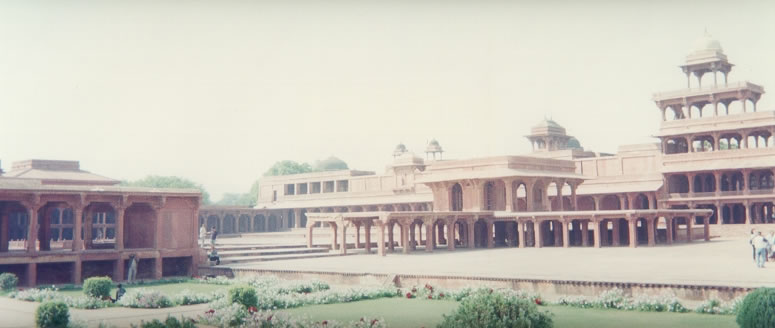 Moghul Emperor Akbar's Fatephur Sikri, near Agra |
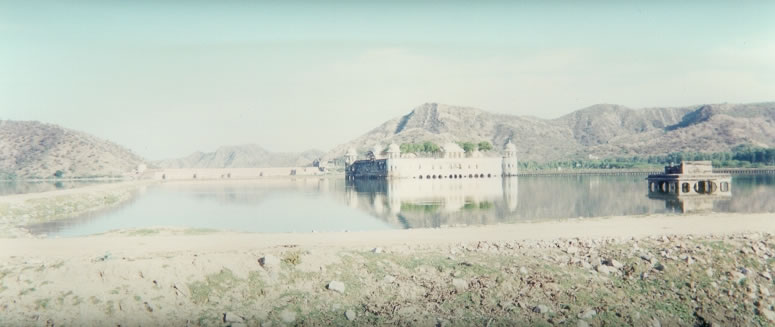 On the road to Jaipur |
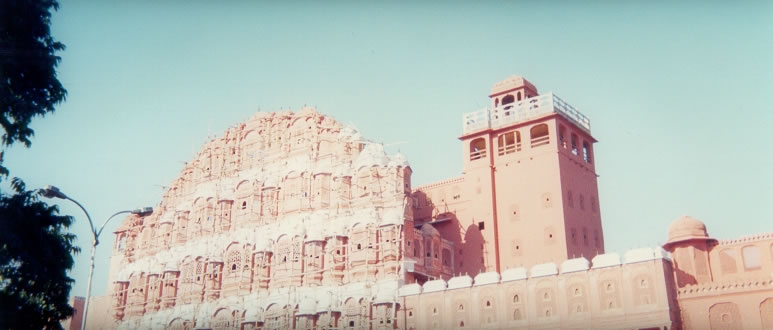 Palace of the Winds, Jaipur |
|
Legend says that Akbar
was without a male heir and made a pilgrimage to this spot to see the
saint Shaikh Salim Christi. The saint foretold the birth of Akbar's
son, the future emperor, Jehangir, and in gratitude Akbar named his
son Salim.
|
Jaipur, popularly known
as Pinkcity, was built in 1727 AD by Maharaja Sawai Jai Singh II and
designed by the brilliant young Bengali architect Vidhyadhar Bhattacharya.
Designed in accordance with Shilp Shastra - an ancient Hindu treatise
on architecture - Jaipur follows a grid system. The wide straight bazaars,
raastaas (streets), galis (lanes), mohallas and uniform rows of shops
on either side of main bazaars are arranged in nine rectangular city
sectors called chaukris. Encircled by a formidable wall, Jaipur was
the only planned city of its time.
|
The palace lies in the
heart of the city and occupies the whole central grid. The fortified
wall has seven gates and was built for protection from invading armies
and animals that lived in jungles which surrounded the wall that time.
Today, ofcourse, the city has spread beyond the walls and there is hardly
any jungle left even in the vicinity of the walled city.
|
| Agra Fort: The high red sandstone ramparts of this great monument stretch for almost 2.5 kilometres, dominating a bend in the river Yamuna, northwest of the Taj Mahal. The foundation of this majestic citadel was laid by the Emperor Akbar, and it developed as a stronghold of the Moghul Empire under successive generations. The curved bastions of the huge walls are interrupted by impressive gates, of which only the Amar Singh gate is now open to the public. |
The original and grandest
entrance was through the Delhi Gate, which leads to the inner portal
called the Hathi Pol or Elephant Gate. |
More on Agra Fort: The graceful Diwan-i-Am or the Hall of Public Audiences, made of red sandstone, was constructed by Shah Jahan in 1628. Three rows of white polished stucco pillars topped by peacock arches support the flat roof. Today, this Hall is bereft of brocade decorations, silk carpets and satin canopies which would have enhanced the elegance of the settings, when the Emperor sat down with his subjects to hear their complaints. |
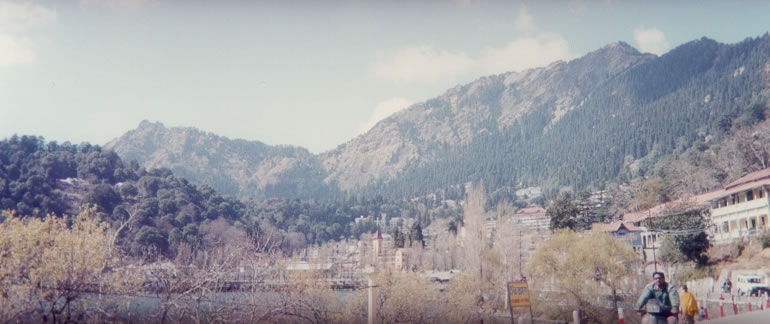 Naini Tal |
|
| At 1938 metres in the Kumaon Hills is the hill station of Naini Tal, once the summer capital of Uttar Pradesh. | A rustic walk along the Yoshi river just below Corbett National Park. |
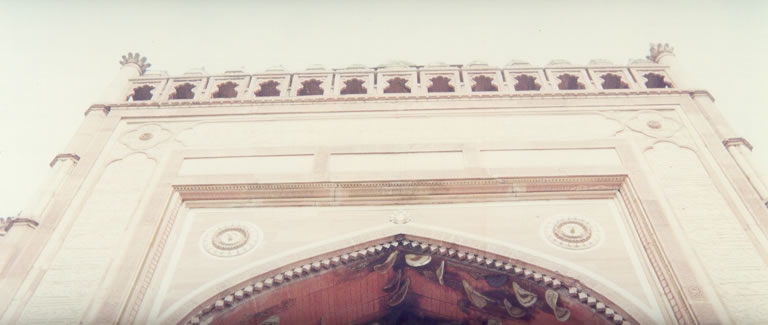 Mosque entrance |
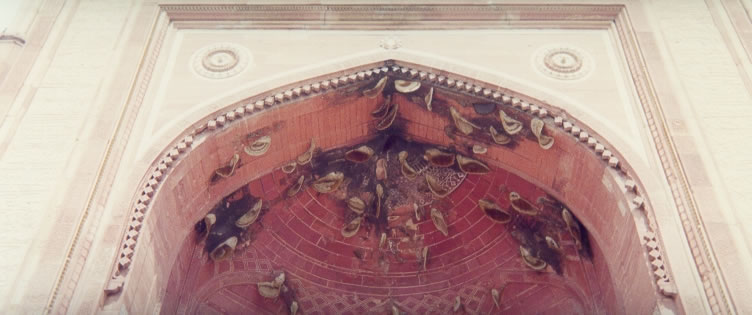 Close up view of the beehives at the Mosque entrance |
| Within the Fort complex is the perfectly proportioned Moti Masjid, or Pearl Mosque, built by Shahjahan between 1646 and 1653. | A Persian inscription within the mosque likens it to a perfect pearl. A marble tank stands at the centre of its spacious courtyard. |

